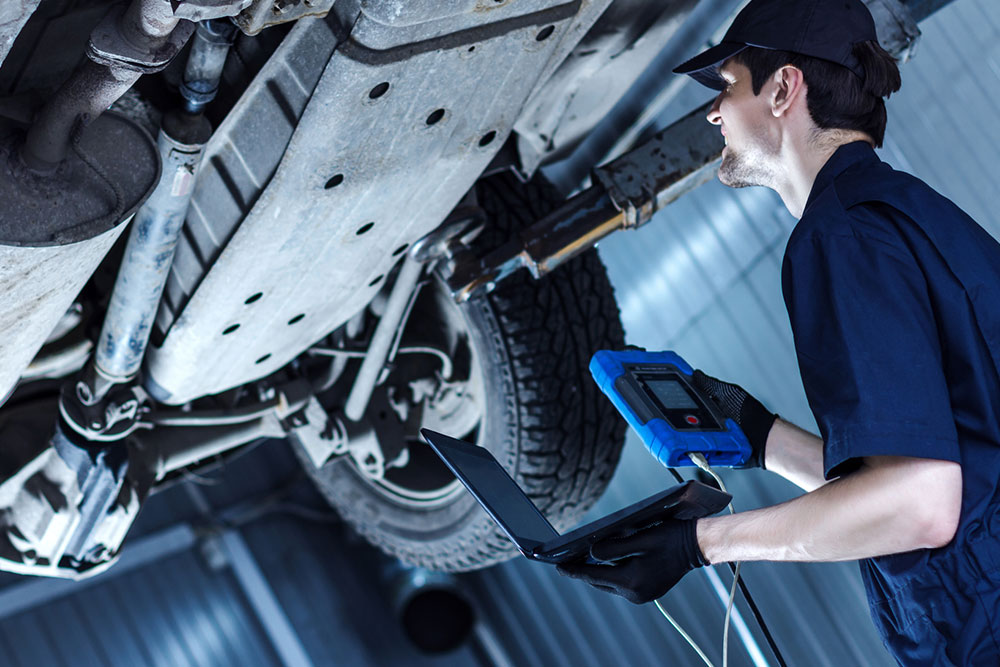Guide to Jeep car maintenance

Jeep vehicles are known for their ruggedness, off-road capability, and iconic design. But one question that often arises in the minds of prospective buyers and Jeep enthusiasts is, “How many miles do Jeep vehicles last?” But the answer to this question isn’t as straightforward as one would expect. There are a lot of variables to consider when estimating a long-term range when it comes to vehicle durability.
This article explores in detail what there is to know about any Jeep’s mileage.
Reasons for its extensive durability
The question of how many miles Jeep vehicles could last ultimately depends on various factors, including maintenance, engine choice, driving habits, and environmental conditions. With proper care and maintenance, many Jeep owners have reported their vehicles reaching over 200,000 miles and beyond. Jeep’s dedication to durability and its iconic status in the world of off-roading make it a trusted choice for those seeking a vehicle that can go the distance, both on and off the road. Below are a few factors that make automobiles from Jeep one of the most reliable on the market:
- Robust build quality
Jeep’s reputation for durability starts with its robust build quality. These vehicles are designed with off-road adventures in mind, so they’re constructed to withstand harsh conditions. Solid frames, sturdy suspension systems, and rugged drivetrains contribute to their longevity. - Multiple engine options
Jeep offers a variety of engine options, and the choice of engine may significantly impact a Jeep’s longevity. The inline-six and V8 engines are known for their robustness and might last longer than the smaller four-cylinder engines. Proper maintenance and careful driving habits are crucial for engine longevity. - Exceptional resale value
Jeep vehicles tend to hold their value well, which could be attributed to their reputation for longevity and reliability. This means that even if the owner decides to sell their Jeep after a certain number of miles, they may often recoup a good portion of the investment.
Tips to make Jeep automobile last longer
Like all vehicles, even those from Jeep will start to wear and tear with time. But here are a couple of tips to get the most mileage and money’s worth out of the vehicle before selling or scrapping it:
- Regular oil changes
One of the most critical aspects of SUV maintenance is ensuring the engine has clean and properly lubricated parts. Regular oil changes, typically every 3,000 to 5,000 miles, depending on the vehicle and the type of oil used, are essential. Fresh oil helps prevent engine wear and overheating and reduces harmful emissions. - Check tire pressure
Maintaining the correct tire pressure is crucial for SUV safety and performance. Incorrect tire pressure might affect handling and fuel efficiency and lead to blowouts. One should read the vehicle’s manual for the recommended pressure and check it regularly, including the spare tire. - Rotate and balance tires
Rotating and balancing the vehicle’s tires ensures even wear and extends lifespan. An individual should consider doing this every 6,000 to 8,000 miles to maintain optimal traction and handling. An aligned set of tires also improves fuel efficiency. - Check the brakes
SUVs tend to be heavier vehicles, so the brakes are critical to safety. Owners should regularly inspect brake pads, rotors, and fluid levels. Squeaking or grinding sounds are signs that it’s time for a brake service. Prompt brake maintenance could prevent costly repairs down the road. - Change the air filter
A clean air filter promotes efficient engine performance and better fuel economy. Check the owner’s manual for the recommended replacement interval between 15,000 and 30,000 miles. However, if an individual drives in dusty or polluted environments, they might need to change it more frequently. - Perform regular fluid checks
Beyond oil and brake fluid, one must regularly check other vital fluids like coolant, transmission fluid, and power steering fluid. Maintaining proper fluid levels ensures the SUV runs smoothly and avoids overheating or mechanical damage. - Track the battery health
A dead battery might leave a driver and other vehicle occupants stranded. Therefore, one must regularly check the battery’s health and terminals, especially in extreme weather conditions. They should also clean up any corrosion and replace the battery as needed, typically every 3–5 years. - Keep an eye on belts and hoses
The owner must inspect the serpentine belt, timing belt, and radiator hoses for signs of wear, cracks, or leaks. Replacing these components could prevent costly breakdowns and engine damage. - Maintain the HVAC system
A functioning heating, ventilation, and air conditioning (HVAC) system keeps the driver and passengers comfortable year-round. It is important to regularly change the cabin air filter, check for leaks, and ensure the system is clean and free from debris. - Check the wiper blades and lights
Visibility is crucial for safety, regardless of the vehicle an individual driver is in. Therefore, they must replace old wiper blades every 6–12 months or when the window accessory leaves marks. The individual should also ensure all lights, including headlights, taillights, and turn signals, are working correctly. - Tune the suspension and steering
SUVs are built to handle various terrains, but this may strain the suspension and steering components. Vehicle owners must inspect them regularly for wear and address any issues promptly to maintain control and comfort. - Focus on cleanliness
People should regularly wash and wax their automobiles to protect the paint and prevent rust. Cleaning the interior to prevent stains and odors and using UV protectants on dashboards and upholstery could also help extend their lifespan. - Do not neglect the fuel system
Occasionally, an individual should add a fuel system cleaner to their gas tank to prevent carbon buildup in the engine and fuel lines. A cleaner system improves fuel efficiency and performance. - Maintain the transmission
If the SUV has an automatic transmission, one should consider servicing it periodically to change the fluid and filter. Proper transmission maintenance ensures smooth gear shifting and prolongs its lifespan. - Follow the maintenance schedule
Consult the SUV’s owner’s manual for the manufacturer’s recommended maintenance schedule. Following these guidelines will help one keep their SUV in optimal condition and preserve its resale value. - Check components
As an owner, one should pay extra attention to maintenance if one takes their SUV off-road frequently. After each off-road excursion, they must also check for damage to the undercarriage, suspension, and tires. Regularly lubricate components susceptible to dirt and debris. - Carry an emergency kit
People who drive vehicles should keep an emergency kit in their SUV, including a spare tire, jack, jumper cables, flashlight, first aid supplies, and essential tools. Being prepared might save an individual in unexpected situations. These tools will also help prevent potential damage if the car breaks down en route. For example, sometimes people with no spare tire might drive to the nearest shop on a flat before changing it. However, this will damage the vehicle’s rim and cost more in the long run. - Drive responsibly
The most important thing for an individual to do to improve their vehicle’s lifespan is to drive responsibly. People should avoid aggressive driving and excessive speeding. They must also avoid overloading their vehicle, as it could lead to increased wear and tear.



